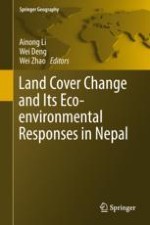2017 | OriginalPaper | Buchkapitel
14. Livelihood and Land Use Pattern of Melamchi Basin in the Mountainous Areas of Central Development Region in Nepal
verfasst von : Yi Su, Wei Deng, Jifei Zhang, Shanta Paudel Khatiwada, Hriday Lal Koirala
Erschienen in: Land Cover Change and Its Eco-environmental Responses in Nepal
Verlag: Springer Singapore
Aktivieren Sie unsere intelligente Suche, um passende Fachinhalte oder Patente zu finden.
Wählen Sie Textabschnitte aus um mit Künstlicher Intelligenz passenden Patente zu finden. powered by
Markieren Sie Textabschnitte, um KI-gestützt weitere passende Inhalte zu finden. powered by
